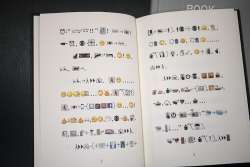Chinese artist writes book using only emoticons. Dare to read?
Book from the Ground includes 24 chapters narrated using visual icons.

"Book from the Ground" is a book written using only emoticons by Chinese artist Xu Bing that illustrates the ability to create a universal language using graphic symbols, he said Wednesday in Valencia, Spain. Xu's aim in creating the book, which so far has only been published in the US, is for any person anywhere in the world to be able to understand the story without having to know any given language in advance, since the emoticon symbols are universally shared and used, the Efe news reported.
This preoccupation with language, which permeates all of Xu's work, stems from his childhood. When he was 11, the Cultural Revolution erupted in China and he had to learn new, simplified Chinese characters in order to be able to read and write according to the government's new guidelines.
"It's the first book that everyone in the world can read, since it needs no translation," said the artist, adding that currently, by using a very simple system of signs, emoticon users, especially young people, enjoy the ability "to communicate on the international level."
"The idea for the book began 13 years ago, when I was having expositions all over the world and I spent a lot of time in airports," said Xu, who said he could not avoid noticing, in an enclave where people of all nationalities mingle, that the informational icons visible everywhere were universally understood.
The book includes 24 chapters narrated using visual icons that tell the story of one day in a person's life as he gets up in the morning, goes through his workday, goes out with his friends after work and then finally goes to bed.
"Book from the Ground" - in addition - is a continuation of Xu's book entitled "Book from the Sky," a work with illegible Chinese characters that nobody can read, using a language invented by the artist himself.
Xu presented his new book at the Art for People exposition, where on display is a banner given to him by the Museum of Modern Art in 1999 on which can be read the slogan "Art for the People" with the English letters grouped in a way that simulates Chinese writing.
Using the same calligraphic technique, the artist has also adapted - or translated - the 15th century poem "El bon poble" by Ausias March in a work inspired by the Valencian culture.